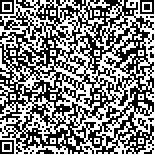| 引用本文: |
-
尚浩江,周伟,胡传明,申欣,朱朋昌,李帅.不同天然基质对条斑紫菜丝状体培养的影响[J].广西科学,2022,29(1):176-184. [点击复制]
- SHANG Haojiang,ZHOU Wei,HU Chuanming,SHEN Xin,ZHU Pengchang,LI Shuai.Effects of Different Natural Medium on the Conchocelis Culture of Neopyropia yezoensis[J].Guangxi Sciences,2022,29(1):176-184. [点击复制]
|
|
| |
|
|
| 本文已被:浏览 635次 下载 771次 |

码上扫一扫! |
| 不同天然基质对条斑紫菜丝状体培养的影响 |
|
尚浩江1, 周伟2, 胡传明2, 申欣1, 朱朋昌1, 李帅3
|
|
|
| (1.江苏海洋大学, 江苏省海洋生物技术重点实验室, 江苏连云港 222000;2.江苏省海洋水产研究所, 江苏南通 226007;3.上海海洋大学, 上海 201306) |
|
| 摘要: |
| 为筛选适宜条斑紫菜(Neopyropia yezoensis)生长的天然培养基质,并为贝壳替代基质研究打下基础,本研究比较分析了多种培养基质对条斑紫菜贝壳丝状体着生、生长与壳孢子放散的影响,在16℃、(12.5±1.0) μmol/(m2·s)光照强度下,接种条斑紫菜Y-9101丝状体于文蛤(Meretrix meretrix)壳、近江牡蛎(Ostrea rivularis)壳、三角帆蚌(Hyriopsis cumingii)壳、虾夷扇贝(Patinopecten yessoensis)壳、海月蛤(Placuna placenta)壳、鸡蛋壳和珍珠等生物合成基质以及方解石原石、霰石原石、几丁质碎片与壳聚糖薄膜上,并培养至壳孢子放散,利用光学与电子显微镜等,观测丝状体的着生效率、水平生长速率、纵向生长深度及壳孢子放散量。结果显示,条斑紫菜丝状体可在生物合成基质与壳聚糖薄膜表面着生并向外呈自由丝状体样生长,向内只在生物合成基质中形成贝壳丝状体,未发现生长于壳聚糖薄膜内,且未在方解石原石、霰石原石与几丁质碎片内部着生。贝壳丝状体在近江牡蛎壳与鸡蛋壳中着生效率最高,分别达(4.5±0.6)%、(4.2±0.6)%;在三角帆蚌、近江牡蛎和文蛤贝壳中水平生长速率最大,平均为63.5 μm/d;在鸡蛋壳中纵向生长最深,达(334.9±15.0) μm;在文蛤壳中的壳孢子放散量最高,其次为鸡蛋壳。综上所述,条斑紫菜贝壳丝状体均可在文蛤、近江牡蛎、三角帆蚌、虾夷扇贝与海月蛤等贝壳以及鸡蛋壳和珍珠中着生至放散壳孢子,除文蛤、近江牡蛎、三角帆蚌、虾夷扇贝外,鸡蛋壳较为适宜贝壳丝状体的着生、生长与壳孢子放散,贝壳丝状体未发现生长于方解石原石、霰石原石、几丁质碎片与壳聚糖薄膜中。 |
| 关键词: 培养基质 条斑紫菜 贝壳丝状体 着生效率 生长速率 |
| DOI:10.13656/j.cnki.gxkx.20220311.007 |
| 投稿时间:2021-04-07 |
| 基金项目:南通市科技计划项目(MS22021016),江苏省种业振兴“揭榜挂帅”项目(JBGS[2021]033),江苏省现代农业产业技术体系项目(JATS[2021]419)和江苏省研究生科研与实践创新计划项目(JSCX19-0984)资助。 |
|
| Effects of Different Natural Medium on the Conchocelis Culture of Neopyropia yezoensis |
|
SHANG Haojiang1, ZHOU Wei2, HU Chuanming2, SHEN Xin1, ZHU Pengchang1, LI Shuai3
|
| (1.Jiangsu Provincial Key Laboratory of Marine Biotechnology, Jiangsu Ocean University, Lianyungang, Jiangsu, 222000, China;2.Jiangsu Marine Fisheries Research Institute, Nantong, Jiangsu, 226007, China;3.Shanghai Ocean University, Shanghai, 201306, China) |
| Abstract: |
| In order to screen the natural culture medium suitable for Neopyropia yezoensis and lay the foundation for the study of shell substitute medium, the effects of different culture media on the formation, growth and spore dispersal of shell filaments of N.yezoensis were compared and analyzed in this study.The conchocelis of N.yezoensis Y-9101 was implanted on biosynthetic substrates, including Meretrix meretrix shells, Ostrea rivularis shells, Hyriopsis cumingii shells, Patinopecten yessoensis shells, Placuna placenta shells, eggshells, pearls, and calcite protolith, aragonite protolith, chitin fragments and chitosan films at 16℃ with (12.5±1.0) μmol/(m2·s) light intensity.And it was and cultured to the release of conchospores.The implanting efficiency, horizontal growth rate and growth depth of shell conchocelis and the release amount of conchospores were measured by optical and electron microscopes.The results showed that N.yezoensis shell conchocelis can be implanted and grew outward as free-living conchocelis on the surface of the biosynthetic culture substrates and chitosan films, as well as formed conchocelis in the internal biosynthetic substrates, and no growth was found in chitosan films.No shell conchocelis was found growing in the inner of calcite, aragonite and chitin particles.The highest implanting efficiency of shell conchocelis in oyster shells and eggshells were (4.5±0.6)% and (4.2±0.6)%, respectively.The horizontal growth rate was the highest on shells of H.cumingii, oysters and clam, with an average of 63.5 μm/d.The longitudinal growth length in eggshells was the deepest, reaching (334.9±15.0) μm.The release amount of conchospores in the clam shells was highest, followed by the eggshells.In summary, N.yezoensis shell conchocelis can be implanted, cultivated, and regulated conchospores release in clam shells, O.rivularis shells, H.cumingii shells, P.yessoensis shells, P.placenta shells, as well as eggshells and pearls.Besides clam shells, oyster shells, H.cumingii shells and P.yessoensis shells, eggshells were more suitable for the implantation, growth and conchospores release of N.yezoensis shell conchocelis.N.yezoensis shell conchocelis is not found to grow in calcite, aragonite, chitin particles and chitosan films. |
| Key words: culture medium Neopyropia yezoensis shell conchocelis implantation efficiency growth rate |
|
|
|
|
|